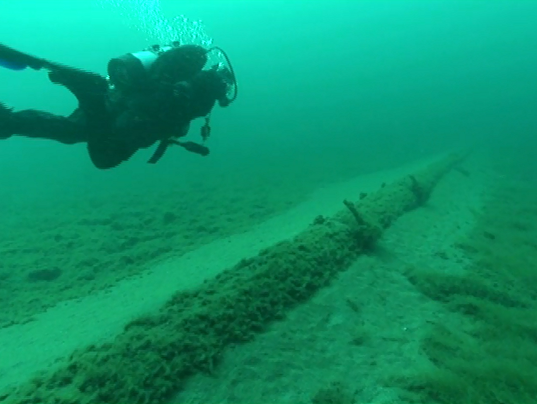ThinkProgress
Pruitt tells climate deniers he’ll stop counting value of lives saved for new rules
Scott Pruitt plans to stop tallying the co-benefits of cutting pollution.
By Philip Newell, Nexus Media April 13, 2108
 EPA Administrator Scott Pruitt. Credit: Gage Skidmore/
EPA Administrator Scott Pruitt. Credit: Gage Skidmore/
Scott Pruitt, still clinging to the helm of President Trump’s EPA, met with allies at the Heritage Foundation Wednesday for what one attendee described as a “deniers’ convention,” according to E&E News. Pruitt told attendees that he is planning to stop counting the co-benefits of environmental protections, The Daily Caller reported.
If Pruitt hangs on to his job long enough to implement the proposal — and it survives inevitable legal challenges — it could be prove critical to his efforts to discredit the science underpinning numerous environmental protections.
In doing cost-benefit analyses of new rules, experts account for auxiliary benefits of those rules. For example, the goal of the EPA’s Clean Power Plan — a target for Pruitt — is to reduce heat-trapping carbon pollution from coal-fired power plants. But, in prompting utilities to switch away from coal to cleaner energy sources like wind and solar, the measure would also reduce emissions of particular matter, sulfur dioxide and other pollutants, saving thousands of lives. These saved lives are counted as co-benefits.
Federal agencies must assign a monetary value to a human life when performing cost-benefit analyses. That valuation varies slightly from agency to agency, but the rough consensus is that an American life is worth a little more than $9 million. That is significant when considering a new rule’s impact on industry. The Clean Power Plan, for example, would cost the coal sector billions of dollars, but it would save the country billions more by guarding public health.
Under Pruitt’s proposal, the EPA wouldn’t deny that the Clean Power Plan could save around 4,500 lives each year — a fact it currently acknowledges. Rather, when tallying up the benefits of reducing pollution, those lives simply would not count. In short, the man charged with protecting Americans’ health believes that, when performing a cost-benefit analysis, the EPA should not consider the value of saving American lives.
The proposal comes on the heels of Pruitt’s plans to prevent the agency from using certain scientific research in issuing new rules. Pruitt’s efforts to restrict the EPA’s use of science draw on plans championed by conservative commentator Steve Milloy, who attended Wednesday’s meeting at the Heritage Foundation. Milloy has close ties to the fossil fuel and tobacco industries.
In recent weeks, Pruitt has come under attack for several potential ethics violations. This week’s announcement could be intended to shore up support among conservative allies, who will pressure Trump not to fire the embattled EPA Chief. Pruitt appears eager to make friends with co-benefits.
Phil Newell writes for Nexus Media, a syndicated newswire covering climate, energy, policy, art and culture.
HuffPost
Former EPA Aide Accuses Scott Pruitt Of ‘Unethical, Potentially Illegal’ Behavior
Alexander C. Kaufman, HuffPost April 12, 2108
Environmental Protection Agency Administrator Scott Pruitt directed staff to book travel that allowed him to personally accrue more frequent flier miles, insisting on flying first class on an airline not on the government’s approved list and staying in pricey hotels, according to a bombshell new letter released Thursday by congressional investigators.
The allegations come from Kevin Chmielewski, a lifelong Republican and former Trump aide who served as the EPA’s deputy chief of staff until he was removed for raising alarm over Pruitt’s spending, and are detailed in a six-page letter signed by two senators and three House members, all Democrats. The lawmakers ―Reps. Elijah E. Cummings (MD), Gerald Connolly (Va.), Donald Beyer (Va.) and Sens. Tom Carper (Del.), and Sheldon Whitehouse (RI) ― sent the letter to Pruitt and President Donald Trump.
“He said that when he refused to approve your inappropriate and unethical spending, he claimed he was marginalized, removed from his senior position and placed on administrative leave,” the letter to Pruitt reads.
It adds: “The new information provided by Mr. Chmielewski, if accurate, leaves us certain that your leadership at EPA has been fraught with numerous and repeated unethical and potentially illegal actions on a wide range of consequential matters that you and some members of your staff directed.”
Pruitt allegedly told staff to “find me something to do” in locations around the country to justify spending taxpayer money, according to the letters. Pruitt “frequently stayed in” hotels that exceeded the allowable government per diem by as much as 300 times the cap permitted in exceptional circumstances. On trips to Australia and Italy, the administrator “refused” to stay in the hotels recommended by the U.S. embassy staff there, instead booking more expensive hotels with less on-site security, bringing his personal bodyguards in tow.
Pruitt was reimbursed for these travel expenses when he personally laid out the money for them, though some of his security detail were not fully compensated for their luxury travel, Chmielewski alleged.
Chmielewski told investigators he overheard Pruitt speaking to his landlord, the energy lobbyist who gave him a sweetheart $50-a-night deal on a room in a Capitol Hill condominium. The lobbyist, J. Steven Hart, whose wife co-owns the building, complained that the administrator had failed to pay rent, and that his adult daughter, McKenna Pruitt, damaged the hardwood floors by repeatedly rolling her luggage though the residence while she stayed there during a White House internship.
“We acknowledge the receipt of this letter from Democrats on Capitol Hill and look forward to responding,” EPA spokesman Jahan Wilcox said in a statement to HuffPost.
The letters put more pressure on Pruitt to resign as a ballooning scandal over accusations of rampant corruption and runaway spending continues into a third consecutive week. In a testament to just how quickly the disparate controversies have mounted, The Washington Post reported earlier on Thursday that Pruitt used four different email addresses, prompting concerns that he has avoided releasing documents requested in public records disclosures.
The allegations come as the Senate is poised to vote to confirm Andrew Wheeler, a former coal lobbyist and Republican congressional staffer, as the EPA’s deputy administrator, putting him next in line to take over the agency should Pruitt exit.

 (Levke Caesar/Potsdam Institute for Climate Impact Research)
(Levke Caesar/Potsdam Institute for Climate Impact Research) The cold “blob” was particularly pronounced in the first half of the year 2015. (NOAA)
The cold “blob” was particularly pronounced in the first half of the year 2015. (NOAA) A lobster boat heads out to sea off Kennebunkport, Maine, at sunrise on Aug. 17, 2015. Fishermen in northern New England have been catching record numbers of lobsters, but south of Cape Cod, the lobster population has plummeted to the lowest levels ever seen, in a northward shift that scientists attribute in large part to the warming of the ocean. (Robert F. Bukaty/AP)
A lobster boat heads out to sea off Kennebunkport, Maine, at sunrise on Aug. 17, 2015. Fishermen in northern New England have been catching record numbers of lobsters, but south of Cape Cod, the lobster population has plummeted to the lowest levels ever seen, in a northward shift that scientists attribute in large part to the warming of the ocean. (Robert F. Bukaty/AP)




 (Photo: National Wildlife Federation)
(Photo: National Wildlife Federation) An image from underwater inspections of Line 5 in the Straits of Mackinac shows an area of missing protective coating and exposed steel. State officials are concerned, because it appears this damage was caused during the installation of anchor supports for the pipeline, without any repair or reporting of the coating damage. (Photo: Michigan Department of Environment)
An image from underwater inspections of Line 5 in the Straits of Mackinac shows an area of missing protective coating and exposed steel. State officials are concerned, because it appears this damage was caused during the installation of anchor supports for the pipeline, without any repair or reporting of the coating damage. (Photo: Michigan Department of Environment)

 Photo courtesy of
Photo courtesy of 



 gas2.org
gas2.org


 USA Today
USA Today

 Signage is displayed at the FirstEnergy Corp. Bruce Mansfield coal-fired power plant in Shippingport, Pennsylvania, U.S., on Wednesday, Dec. 6, 2017. Photographer: Justin Merriman/Bloomberg
Signage is displayed at the FirstEnergy Corp. Bruce Mansfield coal-fired power plant in Shippingport, Pennsylvania, U.S., on Wednesday, Dec. 6, 2017. Photographer: Justin Merriman/Bloomberg
 Pete Marovich/Getty Images
Pete Marovich/Getty Images